

MLA 9th Edition Formatting
A Simple, Step-by-Step Guide + Free Template
By: Derek Jansen (MBA) | Reviewer: Eunice Rautenbach (DTech) | July 2023
Formatting your paper in MLA style can feel like a pretty daunting task . In this post, we’ll show you exactly how to set up your paper for MLA (9th edition), as quickly and easily as possible. We’ll also share our popular free MLA template , to help you fast-track your writing.
Overview: MLA 9th Edition Formatting
- Structure and layout
- General page setup
- The opening section
- The main body
- Works cited (reference list)
- Free MLA 9 template
MLA Structure and Layout
Let’s start by looking at the overall structure of a typical student paper formatted for MLA 9th edition, before diving into the details of each section. For the most part, MLA papers follow a standardised structure, consisting of the following parts:
The opening section : While MLA doesn’t require a dedicated title page (unlike APA ), it does require an opening section that details some important information about yourself, your university and the paper itself.
The main body : The main body begins directly after the opening section on the first page. This is the “heart” of your paper and there are a very specific requirements regarding how you present and format this content.
The appendix (or appendices): While using an appendix in a student paper is relatively uncommon, you’ll place this section directly after the main body section, if required by your university.
The “Works Cited” list : This section is equivalent to what we’d usually call a references page and it’s where you’ll detail all the reference information corresponding to the in-text citations in the main body of your paper.
These four sections form the standard structure and order of a student paper using MLA 9th edition. As we mentioned, not all sections are always required , so be sure to double check what your university expects from you before submitting. Also, it’s always a good idea to ask your university if they have any style requirements in addition to the standard MLA specification.
Now that we’ve got a big-picture view of the typical paper structure, let’s look at the specific formatting requirements for each of these sections.
Generic Page Setup
Before you jump into writing up your paper, you’ll first need to set up your document to align with MLA’s generic page requirements. Alternatively, you can download our MLA paper template (which comes fully preformatted).
MLA 9th edition requires a 1-inch margin on all sides , for all pages. That said, if you’re writing a dissertation, thesis or any document that will ultimately be printed and bound, your university will likely require a larger left margin to accommodate for physical binding.
Fonts & sizing
MLA does not require that you use any specific font, but we do recommend sticking to the tried and tested , well-accepted fonts. For example, you might consider using one of the following:
- Sans serif fonts : Calibri (11), Arial (11), or Lucida Sans Unicode (10)
- Serif fonts : Times New Roman (12), Georgia (11), or Computer Modern (10)
Whichever font you opt for, be sure to use it consistently throughout your paper . Don’t chop and change, or use different fonts for different parts of the document (e.g., different fonts for the body text and the headings). Also, keep in mind that while MLA does not have a specific font requirement, your university may have its own preference or requirement. So, be sure to check with them beforehand regarding any additional specifications they may have.
In general, all text throughout your document needs to be left-aligned and should not be justified (i.e., leave an uneven right edge). You might consider using a different alignment for section headings, but in general, it’s best to keep things simple .
Line spacing
MLA 9th edition requires double line spacing throughout the document . There should also be no extra space before and after paragraphs . This applies to all sections of the paper, including the “Works Cited” page (more on this later).
Page header
Last but not least, you’ll need to set up a running header for your document. This should contain your last name, followed by the page number. Both of these should be positioned in the top right corner of all pages (even the first page). On a related note, there’s no need for you to include any footer content unless your university specifically requests it.
Now that we’ve looked at the generic formatting considerations, let’s dive into the specific requirements for each section of your paper.
The Opening Section
While MLA-formatted papers typically don’t require a title page, there are very specific requirements regarding the opening section of the first page .
Here’s how you can set your first page up for MLA 9th edition.
- On the first line, write your full name (flush left)
- On a new line, write your professor or instructor’s full name
- On a new line, write the course code and course name
- On a new line, write the full date spelt out (e.g., 15 June 2023)
- On a new line, write the full title of your paper , centre-aligned and using title case (consider using a title case converter if you’re not familiar with this)
- On a new line, begin your body content
All of the above should be in plain, unformatted font – in other words, you don’t need to apply any boldfacing, underlining , etc. That said, you should use italics whenever you’re writing out the titles of other works (for example, titles of books or articles).
To make it all a little more tangible, below is an example of a first page formatted according to the MLA specifications that we just covered.

The Main Body
While the formatting requirements for the body section are relatively light for MLA (at least when compared to APA ), there are still quite a few important things to pay attention to. Here’s what you need to know to get started.
Each of your paragraphs needs to start on a new line , and the first sentence of each paragraph requires a half-inch indent (while the rest of the paragraph is flush left aligned). Note that each paragraph simply starts on a new line and doesn’t require an additional blank line.
MLA 9th edition is fairly flexible in terms of heading formatting. There is no specified formatting, so you can decide what works best for you. However, there are still a few basic rules you need to follow:
- All your headings should be written in title case – never use all caps
- There should be no period following a heading
- Each heading level needs to be uniquely formatted and easily distinguishable from other levels (for example, a distinct difference in terms of boldfacing, underlining or italicisation)
- You can have as many heading levels as you need, but each level must have at least two instances
Abbreviations
When using abbreviations, you’ll need to make sure that you’re using the MLA version of the abbreviation . Below we’ve listed a few common ones you should be aware of:
- Appendix: app.
- Circa: c. or ca.
- Chapter: ch.
- Column: col.
- Definition: def.
- Department: dept.
- Example: e.g.
- Edition: ed.
- Figure: fig.
- Foreword: fwd.
- That is: i.e.
- Journal: jour.
- Library: lib.
- Manuscript(s): MS
- Number: no.
- Quoted in: qtd. in
- Revised: rev.
- Section: sec. or sect.
- Series: ser.
- Translation: trans.
- Version: vers.
- Variant: var.
- Volume: vol.
If you’re interested, you can find a more comprehensive list here . Alternatively, if you have access to the MLA 9th edition handbook, you can find the full list in the first appendix.

In-text citations
MLA 9 has a very specific set of requirements regarding how to cite your sources within the body of your paper. Here are some of the most important things to help you get started with MLA citations.
Author-page number system: in-text citations consist of (at a minimum) the lead author’s last name, followed by the page number of the paragraph you are citing. There is no comma between the two components (only a space).
Types of citations: MLA allows two types of in-text citations: parenthetical and narrative . Parenthetical citations feature the author and page number in parentheses (brackets) at the end of the respective sentence. Here’s an example:
MLA 9th edition is easy to grasp if you visit the Grad Coach blog (Jansen 13).
Narrative citations, on the other hand, weave the author’s name into the flow of the sentence and then present the publication date in parentheses at the end of the sentence. Here’s an example:
Jansen states that MLA 9th edition is easy for students to grasp if they visit the Grad Coach blog (13).
In general, it’s a good idea to utilise a mix of both in your writing. Narrative citations are particularly useful when you want to highlight or contrast authors or their viewpoints, while parenthetical citations are useful when you want to strengthen your own academic voice. In other words, both formats have their respective strengths and weaknesses, so try to use citation format strategically in your writing.
Quotations: when quoting text verbatim from a source, there is no need to do anything differently in terms of the citation itself, but do remember to wrap the verbatim text in quotation marks. Here’s an example:
Jansen proposes that MLA 9th edition is “easy to grasp if you visit the Grad Coach blog” (13).
Multiple authors: when citing resources that were authored by three or more people, you only need to list the lead author, followed by “et al.”. Here’s an example:
MLA 9th edition is easy to grasp if you visit the Grad Coach blog (Jansen et al. 13).
Below are a few more examples from our free MLA template .

Please keep in mind that this is not an exhaustive list of all the MLA 9th edition citation-related requirements – just a shortlist of the most commonly relevant ones. If you’d like to learn more, consult the MLA handbook .
The Works Cited (Reference List)
The final section that you’ll need to pay close attention to is the “Works Cited” page, which should contain a list of reference information for all the sources cited in the body of the paper. Again, MLA has a quite a meaty set of specifications regarding the content and formatting of this list, but we’ll cover the basics here to get your started on the right foot.
Basic setup
Your reference list needs to start on a new page and should be titled “Works Cited”. The title should be unformatted and centred . The reference list should then start on the next line. As with the rest of your document, you should use double line spacing throughout.
When it comes to the reference list itself, you’ll need to keep the following in mind:
- All the sources that you cited in the body of your document should feature in the reference list. Make sure that every citation is accounted for .
- The references should be ordered alphabetically , according to the lead author’s last name .
- The exact information required within each entry depends on the type of content being referenced (e.g., a journal article, web page, etc.)
- Components that may need to feature (other than the author) include the title of the source, the title of the container, other contributors, the article version or number, the publisher, the publication date, and the location.
- All references should be left-aligned and should use a hanging indent – i.e., the second line of any given reference (if it has one) should be indented a half inch.
We have to stress that these are just the basics. MLA 9th edition requires that your references be structured and formatted in a very specific way , depending on the type of resource. If you plan to draft your reference list manually, it’s important to consult your university’s style guide or the MLA manual itself. This leads us to our next point…
In general, it’s a bad idea to write your reference list manually . Given the incredibly high level of intricacy involved, it’s highly likely that you’ll make mistakes if you try to craft this section yourself. A better solution is to use (free) reference management software such as Mendeley or Zotero . Either of these will take care of the formatting and content for you, and they’ll do a much more accurate job of it too.
If you’re not familiar with any sort of reference management software, be sure to check out our easy-to-follow Mendeley explainer video below.
Wrapping Up
In this post, we’ve provided a primer covering how to format your paper according to MLA 9th edition. To recap, we’ve looked at the following:
- The structure and layout
- The general page setup
- The “Works Cited” page (reference list)
Remember to always check your university’s style guide to familiarise yourself with any additional requirements they may. Also, if your university has specified anything that contrasts what we’ve discussed here, please do follow their guidance .
If you need any help formatting your paper for MLA 9, take a look at our “done for you” language editing and proofreading service . Simply send us your document and we’ll take care of all the MLA formatting intracies on your behalf.
Very well recounted!
Submit a Comment Cancel reply
Your email address will not be published. Required fields are marked *
Save my name, email, and website in this browser for the next time I comment.
- Print Friendly
Explore our new content updates to the MLA Handbook Plus platform!
What’s New on MLA Handbook Plus ?
What is mla handbook plus .
MLA Handbook Plus is a new, subscription-based digital product providing online access to the ninth edition of the MLA Handbook. To learn more about MLA Handbook… Read More
What’s New in the Ninth Edition of the MLA Handbook (Spring 2021)
Published in April 2021, the ninth edition of the MLA Handbook works as both a textbook and a reference guide. You can order a copy… Read More
MLA Guide to Digital Literacy , 2nd Edition: An Interview with the Author
by Ellen C. Carillo
Ellen C. Carillo talks to the MLA about the MLA Guide to Digital Literacy , second edition. Read More
Bear versus Bare
by Laura Kiernan
Learn when to use bear instead of bare . Read More
Teaching Resources
A Century of Queer Korean Fiction : An Interview with Samuel Perry
Toward Educational Justice: An Interview with the Editors of Teaching Literature and Writing in Prisons
Henrique Maximiano Coelho Neto’s Sphinx: A Neo-Gothic Novel from Brazil : An Interview with M. Elizabeth Ginway
A Reflection on Disability Studies: Enabling the Humanities on Its Twentieth Anniversary
Teaching Claire de Duras’s Ourika
Teaching Nineteenth-Century Activist Rhetorics Today: An Interview
How and Why to Teach Late-Twentieth-Century Mexicana and Chicana Writers: An Interview
Advice from the Editors
Your and You’re : How to Tell Them Apart
Similar but Different: Using Compare with and Compare to
Forego versus Forgo
Was and Were with the Subjunctive
Their , There , and They’re : Learn the Difference
Attributive Nouns; or, Why There Is Sometimes No Apostrophe in Terms Such As Teachers Union
Terms for Key Concepts
Ask the MLA
How do i cite quotations from different pages of a work.
This post explains how to cite quotations from different pages of a work. Read More
How do I cite a playlist?
Cite a playlist by following the MLA template of core elements. In the Title of Container element, include the name of the playlist surrounded in… Read More
How do I alphabetize Irish surnames in the works-cited list?
This post explains how to alphabetize Irish surnames Read More
Search Modern Language Association
Log in to Modern Language Association
- Annual Report
- MLA News Digest Archive
- Mission and Strategic Priorities
- Advertising
- Join the MLA Mailing List
- The MLA Staff
- Delegate Assembly
- Executive Council
- Related Organizations
- Donate to the MLA
- Leading Contributors to the MLA
- MLA Webinars Site
- ADE-ALD Summer Seminar and MAPS Leadership Institute
- MLA Convention Seminars
- Presidential Theme for the 2025 Convention
- Information for Attendees
- Proposing a Just-in-Time Session
- Registration Rates for the 2025 Convention
- MLA Exhibit Hall
- Access Guidelines for MLA Convention Session Organizers and Presenters
- Calls for Papers
- Policies for Forums and Allied Organizations
- Procedures for Organizing Convention Meetings
- Exhibiting at the 2025 MLA Convention
- Sponsorship and Marketing
- Convention History
- Appropriate Conduct at the MLA Annual Convention
- Join the MLA
- MLA Academic Program Services
- MLA Newsletter
- MLA Strategic Partnership Network
- Renew Your Membership
MLA Handbook Plus
- Buy the MLA Handbook
- MLA Style Support
Publications
- Backlist Titles
- Forthcoming Titles
- Library Subscriptions
- What We Publish
- What We Value
- How to Propose a Volume
- Contribute to a Book in Development
- Request Your Complimentary MLA Handbook
- About the MLA International Bibliography
- Free Online Course
- Frequently Asked Questions
- Submitting Work to the MLA International Bibliography
- Tutorial Videos
- Using the MLA International Bibliography
- Executive Council Actions
- MLA Pathways
- Resources on Academic Freedom, Free Speech, and the Right to Protest
- Resources on Collective Action
- Career Resources
- Conferences, Fellowships, and Announcements
- Humanities Leadership for Community College Faculty
- MLA Grants and Awards
- MLA Professional Development Webinars
- MLA Sit and Write Sessions
- MLA Webinars on the Public Humanities
- MLA Language Map
- Reports and Professional Guidelines

Request Your Free Member Copy

Buy the MLA Handbook

The MLA Style Center
What is mla style.
Building confidence in the information and ideas we share with one another is perhaps more important today than ever before, and for nearly a century it has been the driving principle behind MLA style, a set of standards for writing and documentation used by writers to find and evaluate information, alert their audience to the trustworthiness of their findings through citation, and shape the expression of their ideas in conversation with others.
Resources for MLA Style
Our new, subscription-based digital platform, MLA Handbook Plus is
- Trusted : The only authorized subscription-based digital resource featuring the latest edition of the MLA Handbook is available for unlimited simultaneous users.
- Evolving : Get the same content as the print edition, plus seamless annual updates and forthcoming additional resources such as videos and companion titles.
- Dynamic : Features an easy-to-search interface, cross-linking of related material, and a split view that lets students see illustrations while reading corresponding content.
- Flexible : Whether on campus, at home, or in a coffee shop, students can access the platform from anywhere—perfect for remote or hybrid learning environments.
- Affordable : Tiered pricing model based on full-time undergraduate enrollments in US higher education institutions (with custom pricing options for secondary schools, consortia, international schools, campus systems, and other organizations).
- Accessible : Meets current accessibility standards—ensuring that learning MLA style is available to all.
Watch a video about MLA Handbook Plus or contact [email protected] for more info.
MLA Handbook , 9th Edition
The ninth edition of the MLA Handbook , published in spring 2021, builds on the MLA's unique approach to documenting sources using a template of core elements—facts common to most sources, like author, title, and publication date—that allows writers to cite any type of work, from books, e-books, and journal articles in databases to song lyrics, online images, social media posts, dissertations, and more. With this focus on source evaluation as the cornerstone of citation, MLA style promotes the skills of information and digital literacy so crucial today. The new edition offers
- New chapters on grammar, punctuation, capitalization, spelling, numbers, italics, abbreviations, and principles of inclusive language
- Guidelines on setting up research papers in MLA format with updated advice on headings, lists, and title pages for group projects
- Revised, comprehensive, step-by-step instructions for creating a list of works cited in MLA format that are easier to learn and use than ever before
- A new appendix with hundreds of example works-cited-list entries by publication format, including websites, YouTube videos, interviews, and more
- Detailed examples of how to find publication information for a variety of sources
- Newly revised explanations of in-text citations, including comprehensive advice on how to cite multiple authors of a single work
- Detailed guidance on using notes in MLA style
- Instructions on quoting, paraphrasing, summarizing, and avoiding plagiarism
- Annotated bibliography examples
- Numbered sections throughout for quick navigation
- Advanced tips for professional writers and scholars
The MLA Style Center offers free online resources on MLA style, including an interactive MLA format template, answers to common questions on Ask the MLA, advice from the MLA editors, and more. Get updates by signing up for The Source newsletter, and follow us on X @MLAstyle .
- Link to facebook
- Link to linkedin
- Link to twitter
- Link to youtube
- Writing Tips
What Is the MLA Format for an Essay?
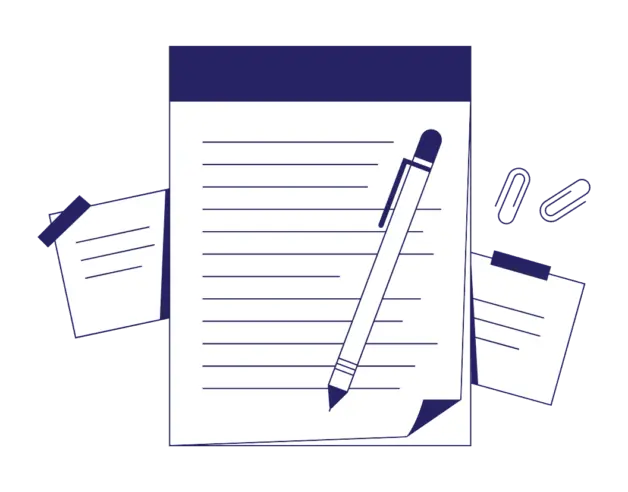
4-minute read
- 12th October 2023
When writing academic essays, adhering to the proper formatting guidelines is crucial. One of the most widely used styles for academic writing is the Modern Language Association (MLA) format. However, MLA is more than just providing in-text citations and a Works Cited page . If you’re curious, read on.
Today’s post will explore:
● What MLA format is.
● Why it is important.
● How to correctly format essays in MLA style .
What Is MLA Format?
MLA format is a set of guidelines established by the Modern Language Association for writing and documenting research papers, essays, and scholarly articles. These guidelines provide a standardized way to structure and format academic writing, making it easier for readers to understand and engage with the content.
Why Is MLA Format Important?
MLA format serves several important purposes in academic writing:
1. Clarity and Readability
Thanks to its standardized layout and citation style, MLA ensures your essay is easy to read and comprehend.
2. Academic Integrity
Properly citing sources demonstrates academic integrity by giving credit to the original authors and avoiding plagiarism .
3. Consistency
MLA provides a consistent and uniform structure for essays, making it easier for readers and instructors to navigate your work.
4. Publication Standards
Many academic journals and publishers require submissions to follow MLA guidelines, making it crucial for researchers and authors.
How to Format Your Essay in MLA Style
Now, let’s go through step-by-step instructions to help you correctly format your essay.
1. Margins and Page Layout
● Go to the Page Layout settings in your word processor and set one-inch margins on all sides of the paper.
● Set the text to be left-aligned.
● Choose a legible 12-point font (e.g., Times New Roman or Arial).
2. Create a Title Page
● Include your name, instructor’s name, course title, and the date in the upper left-hand corner.
● Center the title of your essay, using standard capitalization (no bold, italics, or underlining).
3. Insert Header and Page Numbers
● Create a header in the upper right-hand corner with your last name and page number (e.g., Jones 1).
Find this useful?
Subscribe to our newsletter and get writing tips from our editors straight to your inbox.
4. Use Proper Line Spacing
● Use double-spacing throughout the entire essay, including the Works Cited page.
5. In-Text Citations
● Cite sources within your essay using parenthetical citations (author’s last name and page number).
Example: We have no time to appreciate the finer things in life (Toldo 201)
● Include a Works Cited page with full bibliographic details for all cited sources.
● Ensure that in-text citations correspond to entries in the Works Cited page.
6. Works Cited Page
● You must start the list with the title Works Cited.
● List all sources used in alphabetical order by the author’s last name.
● Follow a specific format for different types of sources (books, journal articles, websites, etc.).
MLA format is essential to academic writing, ensuring clarity, consistency, and proper citation of sources. As MLA is a widely used style, you’ll have a few essays during your undergraduate years that will require you to adhere to its standards. You can confidently format your essays in MLA style, impressing your professors and maintaining academic integrity by following our guidelines in this post.
We strongly recommend proofreading your essay once it’s finished. Proofreading can be challenging, so we recommend asking our proofreading experts to review your writing . They’ll ensure perfect grammar, spelling, and punctuation. Additionally, they can check that your essay adheres to MLA standards. Consider submitting a 500-word document for free!
Happy learning and happy writing!
1. Is MLA the same as APA or Chicago Turabian?
No! MLA formatting is different from other referencing styles such as APA and Chicago Turabian. If you’re used to using APA or Chicago, you’ll have to familiarize yourself with MLA.
2. Will failing to adhere to MLA affect my essay’s grade?
If your essay is required to be in MLA format, it must adhere to the standards. You can expect the professor to deduct marks for failing to adhere to MLA.
3. Can I write References or Reference List instead of Works Cited?
The title for the list of references must be Works Cited. Again, you could lose marks for deviating from the required title.
4. How will I know if my essay needs to be in MLA?
The essay rubric will usually state the required referencing style. Otherwise, we recommend checking with your professor.
Share this article:
Post A New Comment
Got content that needs a quick turnaround? Let us polish your work. Explore our editorial business services.
5-minute read
Free Email Newsletter Template (2024)
Promoting a brand means sharing valuable insights to connect more deeply with your audience, and...
6-minute read
How to Write a Nonprofit Grant Proposal
If you’re seeking funding to support your charitable endeavors as a nonprofit organization, you’ll need...
9-minute read
How to Use Infographics to Boost Your Presentation
Is your content getting noticed? Capturing and maintaining an audience’s attention is a challenge when...
8-minute read
Why Interactive PDFs Are Better for Engagement
Are you looking to enhance engagement and captivate your audience through your professional documents? Interactive...
7-minute read
Seven Key Strategies for Voice Search Optimization
Voice search optimization is rapidly shaping the digital landscape, requiring content professionals to adapt their...
Five Creative Ways to Showcase Your Digital Portfolio
Are you a creative freelancer looking to make a lasting impression on potential clients or...

Make sure your writing is the best it can be with our expert English proofreading and editing.
Home / MLA Sample Paper
MLA Sample Paper
Mla sample paper #1.
If you’ve been wondering how to produce a research paper that is strong in both formatting and writing, you’ve come to the right place.
Check out our first sample paper below. It is a helpful and clearly labeled visual aid to refer to. Note that while these sample papers do not include MLA abstracts , you should check with your instructor to see if an abstract should be included.
Visual Sample Paper
The example research paper below is one that was written in college for a course on the Inklings. The Inklings were a group of writers in England before WWII, including C.S. Lewis and J.R.R. Tolkien.
The abbreviated MLA paper below (linked here without annotations) is about J.R.R. Tolkien’s Lord of the Rings and how the author used myth, story, and song to link all of his works together. Tolkien is famous for creating a fantasy universe called Middle-earth, which readers can’t truly understand until they read all of the books about Middle-earth ( The Silmarillian, The Hobbit, and The Lord of the Rings ).
Since we’re here to learn how to format an essay, we’ve pointed out some important things about the paper to help you write a correctly formatted essay.
For starters, the essay is in MLA format. That means it follows the style manual of the Modern Language Association, which tells you how to format the paper itself and every source you cite. You’ll also see notes like how long a paragraph should be, how to use commas properly, and how to correctly punctuate a title. Some of these guidelines are different from those in APA format , so be sure to confirm you are using the correct style in your paper.
Pay special attention to the MLA format works cited. We only used one type of source (books), but both citations are correct according to the 9th edition of MLA, published in 2021. When you’re writing your own paper, you need to make sure you always use the most recent edition of the style manual. You’ll also want to check with your instructor to see if you need to include an MLA annotated bibliography with your paper, which contains additional information summarizing and evaluating each source after the regular citation.
Whether you need MLA, APA citations , or Chicago style notes, look up the latest edition before turning in a paper.

MLA Sample Paper #2
See below for an example paper or click below to download it as a Word Document.
The MLA header should be one inch from the top and left margins. The heading and the entire paper should be double spaced.
Eli YaffarabeProfessor Rapheor
28 August 2018
Privatization of Prisons in Texas
The privatization of governmental services has increased dramatically in the past decade as local, state, and federal agencies have searched for ways to cut costs while still meeting their mandated responsibility to provide various public services. This privatizing trend has particularly affected the criminal justice system. Since the early 1990s, privatized correctional facilities have increased significantly, nationally and statewide. This policy has far-ranging consequences not only within the criminal justice system, but as an instructive example for government officials when considering the costs and benefits of privatization as a public policy option. By 2001, thirty states, the District of Columbia, and Puerto Rico had privately-operated correctional facilities (Austin and Coventry 4). This movement has incited considerable debate and controversy, mainly because prison privatization calls for giving the private sector direct control over the lives of a captive human population.
Surprisingly, there has been little objective and concrete analysis of the privatization of prisons in the United States. This is probably for two reasons: first, ideological arguments on the matter have pushed out substantive research, and second, because this trend has only recently accelerated in the U.S. and mainly on a state level. However, case studies and statistics at the state level are more accessible. With capacity for over 30,000 prisoners in 43 facilities, the state of Texas has privatized more of its prison system than any state in the nation (McDonald and Patten Jr. iv).
Yaffarabe 2
Public policy concerning the criminal justice system has become more daunting and important in the last decade. The problems in the system are twofold: an overcrowding prison population, mainly due to “three strikes” legislation and reducing early parole; and the costs of operating prisons with this growing population (Austin and Coventry). According to the most recent U.S. Department of Justice survey, slightly over 2.2 million people were incarcerated in correctional facilities in this country in 2003. In comparison, in 1993, 1.37 million people were imprisoned in this country (Beck and Harrison 1).
At the same time, the growth of privately operated correctional facilities has increased significantly in this country. Private prisons now hold 95,522 inmates in this country, which is 6.5 percent of total prisoners (Beck and Harrison 5). In Texas, 16,570 inmates (10 percent of its prison population) are held in private facilities, about 10,000 more than the next highest state. Furthermore, six states had at least 25 percent of their prison population housed in private prisons, led by New Mexico (44%), Alaska (31%), and Montana (29%). These current statistics show that while state governments have been forced to manage and operate overcrowded and over-capacity prisons at considerable costs, many have turned to the private sector to operate prisons (McDonald and Patten Jr.). According to the General Accounting Office, prison operating costs have grown steadily since 1980, increasing almost 550 percent since 1980 based on inflation-adjusted dollars (Austin and Coventry 1).
Prison privatization started in the early 1980s, ostensibly to ease the burden on taxpayers by offering financial relief to private companies to run state prisons. Thomas Beasley founded Corrections Corporation of America in 1983, “the nation’s leader in the construction and management of private prisons” (Darling). That year, Corrections Corporation of America set up the first privately-operated prison in Tennessee. Since then, the number of private
Yaffarabe 3
correctional facility firms has grown to 14 (Austin and Coventry 3). The privatization of prisons occurs in two ways. First, state government can contract out (or outsource) specific services in a correctional facility to a private company after a bidding process. Second, and more radically, private companies build their own privately-managed prisons and contract with state governments to house their inmates. This latter approach, giving private correctional facility firms wide latitude over inmates, is taken in the Texas criminal justice system. In fact, many of these privately operated facilities “have no relationship at all with the state governments in these states, other than an obligation to pay corporate income taxes” (McDonald and Patten Jr. v).
(Due to its length, the remainder of this sample paper is omitted).
Yaffarabe 4
Works Cited Page
Austin, James, and Garry Coventry. Emerging Issues on Privatized Prisons . Bureau of Justice Assistance, Feb. 2001, www.ncjrs.gov/pdffiles1/bja/181249.pdf.
Beck, Allen J., and Paige Harrison. Prisoners in 2003 . Bureau of Justice Statistics, Nov. 2004, www.bjs.gov/content/pub/pdf/p03.pdf.
McDonald, Douglas, and Carl Patten Jr. Governments’ Management of Private Prisons . Abt Associates, 15 Sept. 2003, www.ncjrs.gov/pdffiles1/nij/grants/203968.pdf.
Darling, Michael. “Pitt News: University of Pittsburgh Shouldn’t Lend Its Name to Prison Privatization.” CorpWatch , 15 Nov. 2004, corpwatch.org/article/pitt-news-univeristy-pittsburgh-shouldnt-lend-its-name-prison-privatization.
MLA Formatting Guide
MLA Formatting
- Annotated Bibliography
- Bibliography
- Block Quotes
- et al Usage
- In-text Citations
- Paraphrasing
- Page Numbers
- Sample Paper
- Works Cited
- MLA 8 Updates
- MLA 9 Updates
- View MLA Guide

Citation Examples
- Book Chapter
- Journal Article
- Magazine Article
- Newspaper Article
- Website (no author)
- View all MLA Examples
How useful was this post?
Click on a star to rate it!
We are sorry that this post was not useful for you!
Let us improve this post!
Tell us how we can improve this post?
An in-text citation is a short citation that is placed next to the text being cited. The basic element needed for an in-text citation is the author’s name . The publication year is not required in in-text citations. Sometimes, page numbers or line numbers are also included, especially when text is quoted from the source being cited. In-text citations are mentioned in the text in two ways: as a citation in prose or a parenthetical citation.
Citation in prose
Citations in prose are incorporated into the text and act as a part of the sentence. Usually, citations in prose use the author’s full name when cited the first time in the text. Thereafter, only the surname is used. Avoid including the middle initial even if it is present in the works-cited-list entry. An example of the first citation in prose for a source with one author is given below:
Doug Barry explains the status of the UK.
Parenthetical
Parenthetical citations add only the author’s surname at the end of the sentence in parentheses. An example of a parenthetical citation is given below:
The status of the UK is explained (Barry).
Examples of in-text citations
Here are a few examples of in-text citations for works with various numbers and types of authors:
Use both the first name and surname of the author if you are mentioning the author for the first time in the prose. In subsequent occurrences, use only the author’s surname. Always use only the author’s surname in parenthetical citations.
Citation in prose:
First mention: Stephen George asserts …. (17).
Subsequent occurrences: George argues …. (17).
Parenthetical:
…. (George 17).
Two authors
Use the first name and surname of both authors if you are mentioning the work for the first time in the prose. In subsequent occurrences, use only the surnames of the two authors. Always use only the authors’ surnames in parenthetical citations. Use “and” to separate the two authors in parenthetical citations.
First mention: Kane Williams and Clark Ronald ….
Subsequent occurrences: Williams and Ronald ….
…. (Williams and Ronald).
Three or more authors
For citations in prose, use the first name and surname of the first author followed by “and others” or “and colleagues.” For parenthetical citations, use only the surname of the first author followed by “et al.”
Krishnan Sethu and colleagues…. or Krishnan Sethu and others ….
…. (Sethu et al.).
Corporate author
For citations in prose, treat the corporate author like you would treat the author’s name. For parenthetical citations, shorten the organization name to the shortest noun phrase. For example, shorten the Modern Language Association of America to Modern Language Association.
The Language Literary Association of Canada….
…. (Language Literary Association).
If there is no author for the source, use the source’s title in place of the author’s name for both citations in prose and parenthetical citations.
When you add such in-text citations, italicize the text of the title. If the source title is longer than a noun phrase, use a shortened version of the title. For example, shorten the title Fantastic Beasts and Where to Find Them to Fantastic Beasts .
Endgame explains …. (121).
…. ( Endgame 121).
In MLA style, two types of citations are used to cite a source: a short citation used within the text (called the in-text citation) and a full citation (called the works cited list entry) within the works cited list, which appears at the end of a paper.
The works cited list entry provides the complete details of a source. An in-text citation is a short citation that is placed next to the text being cited. The in-text citation lets the reader know that the information is derived from the cited source, and helps the reader find the full citation within the works cited list.
In order to properly cite a source in MLA style, you must have both citation types in your paper. Every in-text citation has a works cited list entry. Every works cited list entry has at least one (maybe more) corresponding in-text citation.
In-text citations
The basic element needed for an in-text citation is the author’s surname . The publication year is not required in in-text citations. Sometimes, page numbers or line numbers are also included, especially when text is quoted from the source being cited.
First mention: Sian Anderson studies ….
Subsequent occurrences: Anderson analyzes ….
….(Anderson)
or if quoting directly:
…(Anderson 9)
First mention: Paul Fin and Anna Gabriel ….
Subsequent occurrences: Fin and Gabriel ….
….(Fin and Gabriel)
…(Fin and Gabriel 27)
Paul Hill and colleagues…. or Paul Hill and others ….
….(Hill et al.)
…(Hill et al. 138)
Examples of works cited list entries
Below are a few examples of different types of works cited list entries. The examples given are for one author.
Steinman, Louise. The Knowing Body: Elements of Contemporary Performance and Dance . Shambhala Publications, 1986.
Journal article
Barad, K. “Nature’s Queer Performativity.” Qui Parle , vol. 19, no. 2, 2011, pp. 121–58.
Webpage of a website
Midgelow, Vida L. “Experiences and Perceptions of the Artistic Doctorate: A Survey Report.” Artistic Doctorates in Europe, 5 Feb. 2018, www.artisticdoctorates.com/2017/12/28/experiences-and-perceptions-of-the-artistic-doctorate-survey-report/ .
YouTube video
“Behind the Scenes Chili’s Baby Back Ribs Spot.” YouTube , uploaded by Alvin Chea, 11 Sept. 2017, www.youtube.com/watch?v=gTDLh7gNRYA .
MLA Citation Examples
Writing Tools
Citation Generators
Other Citation Styles
Plagiarism Checker
Upload a paper to check for plagiarism against billions of sources and get advanced writing suggestions for clarity and style.
Get Started

MLA Research Paper Formatting
- MLA 9th Template & Paper Sample
- Finding Sources for Your Paper
- Detailed Comparison (Printable)
- Additional Resources
MLA Style (9th Edition)
- Sample Papers
You are going to love this! Save this template somewhere safe or e-mail it to yourself. Then resave it immediately with the name of your new document. This will keep your template safe and ready to reuse again for future assignments.
This template will be sufficient for most student MLA papers. For more information on formatting your paper, consult the official MLA Style website: https://mlahandbookplus.org/books/book/5/chapter/56247/Introduction-to-Formatting-Your-Research-Project or pages 1-14 in the MLA Manual.

- Purdue Owl Sample Paper Sample paper is downloadable.
- Sample Papers - MLA Style Center PDFs available of the 2022 MLA Student Essay Contest winners.
- << Previous: Home
- Next: Finding Sources for Your Paper >>
- Last Updated: Apr 17, 2024 11:25 AM
- URL: https://libguides.polk.edu/mla
Polk State College is committed to equal access/equal opportunity in its programs, activities, and employment. For additional information, visit polk.edu/compliance .
- Free Tools for Students
- MLA Citation Generator
Free MLA Citation Generator
Generate accurate citations in MLA format automatically, with MyBib!

😕 What is an MLA Citation Generator?
An MLA citation generator is a software tool designed to automatically create academic citations in the Modern Language Association (MLA) citation format. The generator will take information such as document titles, author, and URLs as in input, and output fully formatted citations that can be inserted into the Works Cited page of an MLA-compliant academic paper.
The citations on a Works Cited page show the external sources that were used to write the main body of the academic paper, either directly as references and quotes, or indirectly as ideas.
👩🎓 Who uses an MLA Citation Generator?
MLA style is most often used by middle school and high school students in preparation for transition to college and further education. Ironically, MLA style is not actually used all that often beyond middle and high school, with APA (American Psychological Association) style being the favored style at colleges across the country.
It is also important at this level to learn why it's critical to cite sources, not just how to cite them.
🙌 Why should I use a Citation Generator?
Writing citations manually is time consuming and error prone. Automating this process with a citation generator is easy, straightforward, and gives accurate results. It's also easier to keep citations organized and in the correct order.
The Works Cited page contributes to the overall grade of a paper, so it is important to produce accurately formatted citations that follow the guidelines in the official MLA Handbook .
⚙️ How do I use MyBib's MLA Citation Generator?
It's super easy to create MLA style citations with our MLA Citation Generator. Scroll back up to the generator at the top of the page and select the type of source you're citing. Books, journal articles, and webpages are all examples of the types of sources our generator can cite automatically. Then either search for the source, or enter the details manually in the citation form.
The generator will produce a formatted MLA citation that can be copied and pasted directly into your document, or saved to MyBib as part of your overall Works Cited page (which can be downloaded fully later!).
MyBib supports the following for MLA style:
| ⚙️ Styles | MLA 8 & MLA 9 |
|---|---|
| 📚 Sources | Websites, books, journals, newspapers |
| 🔎 Autocite | Yes |
| 📥 Download to | Microsoft Word, Google Docs |

Daniel is a qualified librarian, former teacher, and citation expert. He has been contributing to MyBib since 2018.
- TemplateLab
MLA Format Templates
38 free mla format templates (+mla essay format).
MLA stands for Modern Language Association. The MLA format is typically used when you need to cite liberal arts and humanities sources. You cite your resources when writing a paper.
There’s a specific style that you can follow while using the MLA format template. There are a lot of available resources online for you to use as a reference. Use these resources if you need to write a research paper template .
Table of Contents
- 1 MLA Format Templates
- 2 What is the MLA style?
- 3 MLA Format Papers
- 4 Parts and styling guide for making MLA format templates
- 5 Research Paper Templates
- 6.1 Some general guidelines
- 6.2 Formatting tips for the first page of your MLA style paper
- 6.3 Essays and books
- 7 MLA Style Papers
- 8 When to use the MLA format
Or you can even download an MLA template here. Usually, this format would contain footnotes, in-text citations, and more.
The MLA format has specific guidelines for presenting the paper. When you write using this style, you always have to use the English language. An MLA format paper would also give you, as a writer, a system for referencing all your sources.
If you use this style of writing correctly, it will help in building your credibility. It shows accountability in terms of the sources you use for your paper. Following this style can also protect you from charges of plagiarism.
If you need to write an MLA style paper, you need to consult with the most recent MLA Handbook . This is the best possible reference for you to use when writing a paper. In this article, we’ll provide you with some guides to help you out while writing.
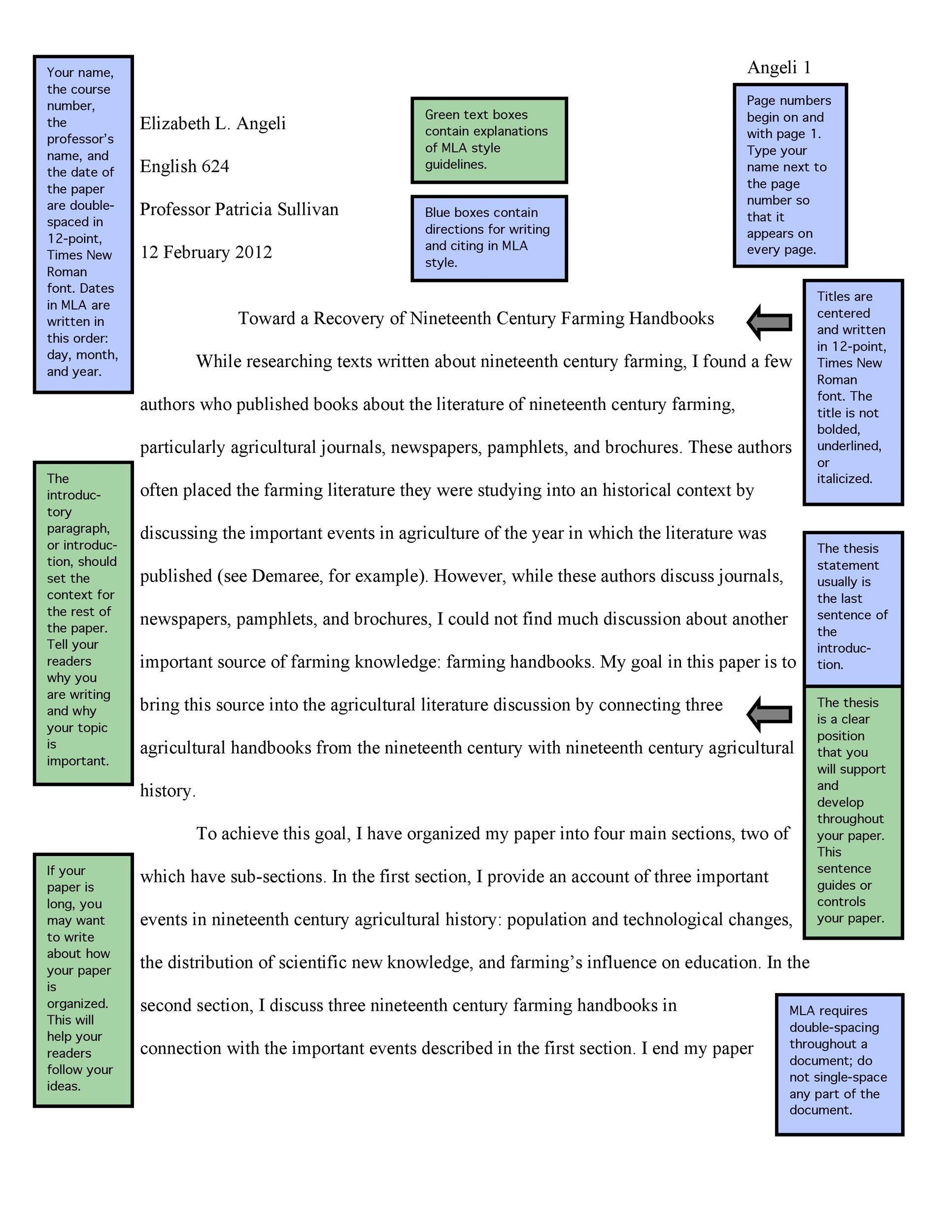
What is the MLA style?
Before you start writing an MLA essay format, you should first learn about the MLA style. This is a system for documenting all the sources you’ve used in scholarly writing. This writing style has been around for more than half a century.
It’s widely used in the educational setting. It’s also used by scholars, journalists, and other types of writers all over the world. Nowadays, writers publish their works using different types of formats.
These formats are being constantly updated and the MLA style is no different. The MLA format was last updated in 2016. It needed an update in order to keep up with all the challenges that writers and researchers today have to face.
This style has a specific set of universal guidelines which the writers need to apply when they use it. Writers have to cite all their resources . This is the core concept which surrounds the MLA style of writing.
The works they cite in the text also come with short parenthetical citations. These brief citations are also very important. The best resources to use when you need to write an MLA format paper are:
- The MLA Handbook This handbook is now in its 8th edition. It’s suitable for writers with different levels. But the writers designed the guidelines with teaching students in their minds. The handbook gives an explanation of the principles behind citing sources. It gives instructions of the system of the MLA style. It explains how to document sources correctly. It also includes guidelines for writing scholarly prose. Aside from this, the handbook also contains guidelines on academic dishonesty and plagiarism. You will also see tips for evaluating your sources and creating entries in your “works cited” list.
- The MLA Style Center This is a companion to the MLA Handbook. It’s the official website dedicated to the MLA style of writing. On it, you can get the chance to submit questions of your own. You can share your insights about the MLA style. You can also view some sample research paper templates. Aside from this, you can also read the instructions on formatting MLA style papers. It has teaching resources and some tools to help you create entries for your “works cited” list.
MLA Format Papers
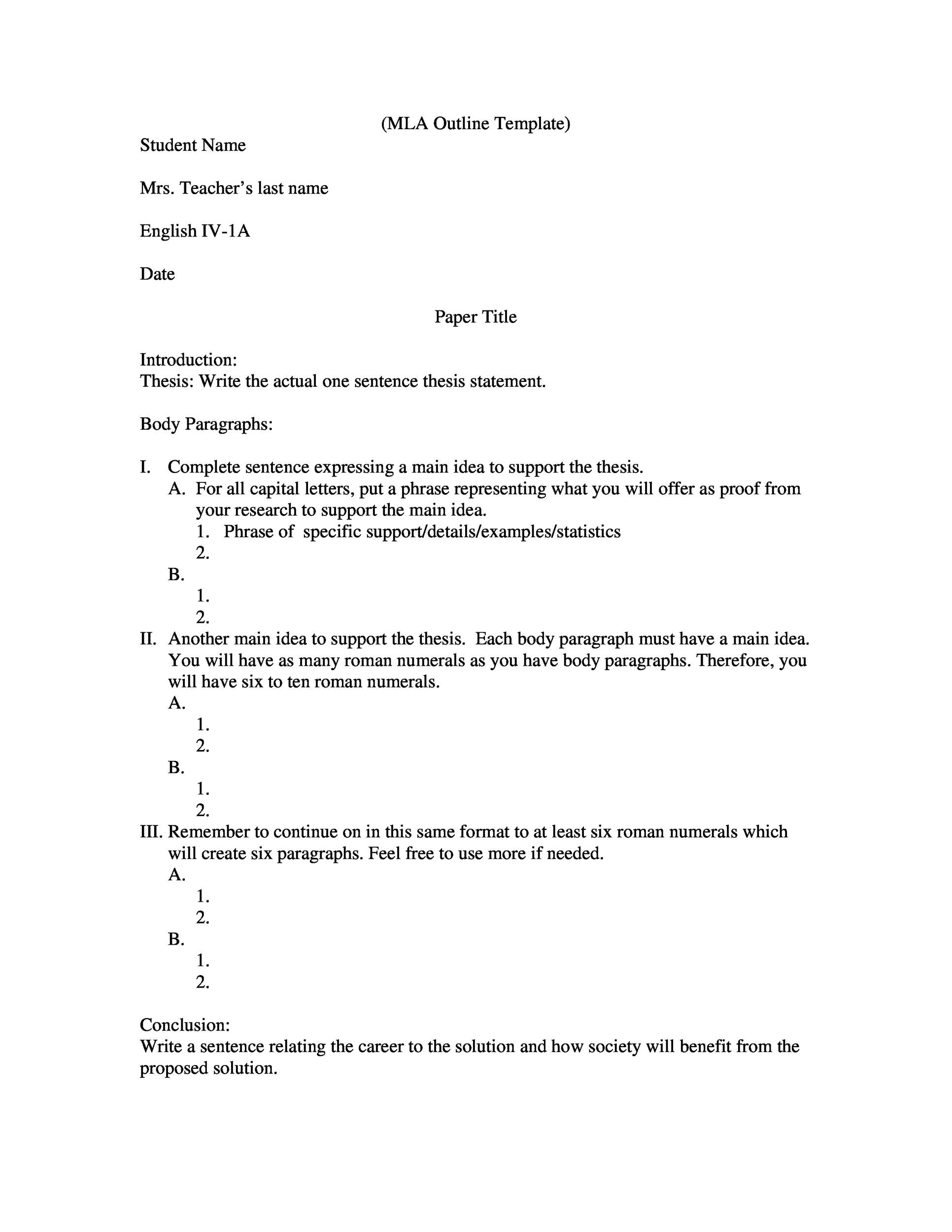
Parts and styling guide for making MLA format templates
If you need to follow an MLA essay format, you need to follow the guidelines for it. This writing style has a number of style rules which don’t change. To help you out, let’s take a look at the different parts of the format.
We will also go through some styling guides which will prove helpful as you write your paper:
- Body text The body text should also be double-spaced. Align the body text to the left. Each time you have a new paragraph, you should start it with a half-an-inch indentation.
- Header For the MLA style, the headers should contain your last name followed by the number of the page. You can find this header in the top-right corner of your pages. The placement of the header is half an inch from the top of the page.
- Heading Remembering all the headings can be quite challenging. This is because they include 4 different parts in order. You have to include your name and the name of your instructor on the heading. Also, include the name of your course and the date. Even the date has a specific format – Day Month Year. Your heading should also be double-spaced. Also, align it to the left side of the very first page.
- Margins When you use an MLA template, you should have 1-inch margins on all sides of your document. The paper size to use is the standard US letter size. Even if you’ll submit your paper online or digitally, you should still use this paper size.
- Text When you type the text, you need to use 12pt font size and the Times New Roman font style. Your document should also be double-spaced.
- Title You should place the title of your paper in the center of the page. You shouldn’t add any other formatting styles to the title.
- Block quotes If your quotes exceed four lines, you have to block them. You should also double-space the block quotes but the indentation would be one inch. You don’t need to use quotation marks for block quotes. That is unless you’re quoting dialogue.
These are some basic styling guides for you. Remember, there are rules for when you write an MLA format template. Now let’s discuss some formatting guidelines. These can help you understand the writing style better.
Research Paper Templates
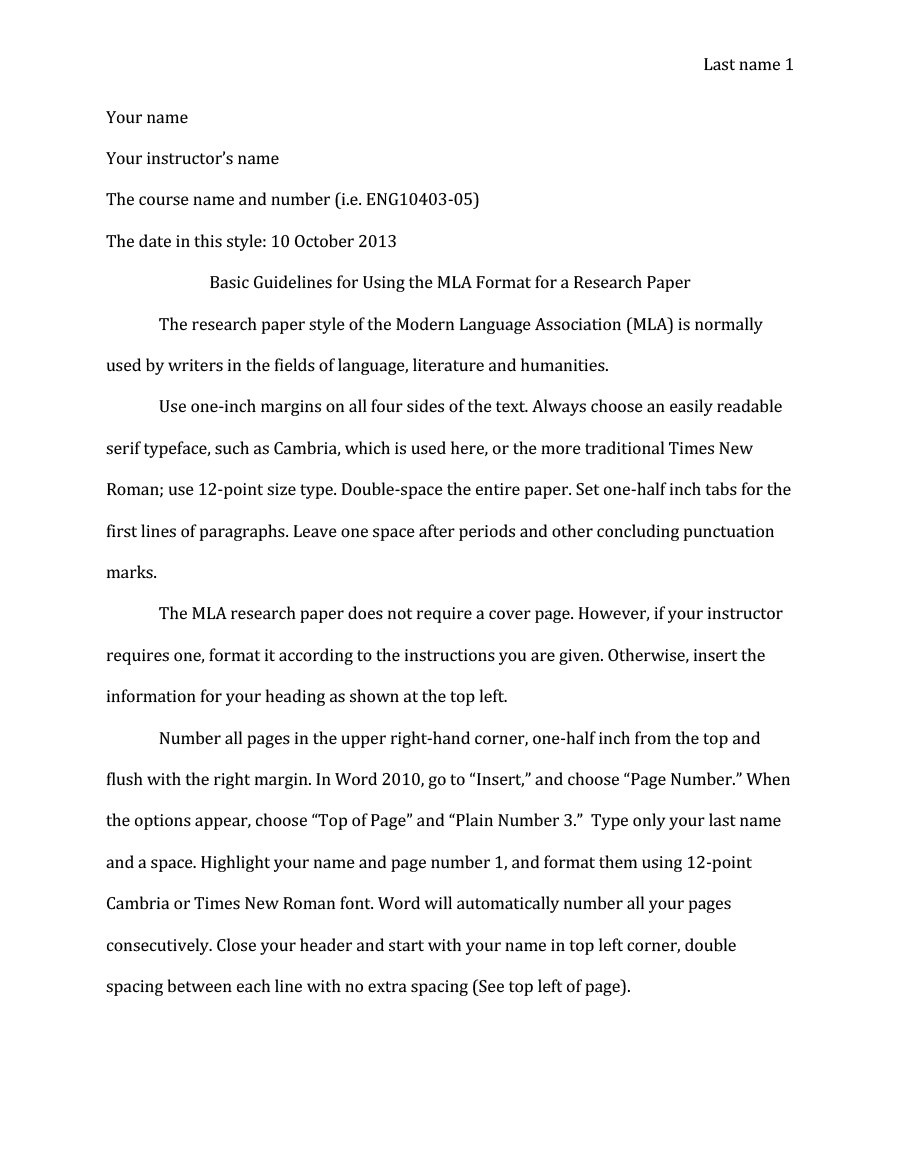
Formatting guidelines for making your MLA format template
Preparing an MLA format paper, you need to stick with the set formatting guidelines. If you don’t follow them, you won’t be able to come up with a correctly-constructed paper.
Aside from using the MLA Handbook, you can also download an MLA format template from here and work on it. But it’s still important to know the guidelines if you write the paper on your own.
Some general guidelines
- Your paper size should be 8.5 x 11-inches, the standard US letter paper size. Set your margins to 1-inch on all the sides of the document. When you print it out, make sure to use white paper.
- All the text on your paper should be double-spaced. You should also use the Times New Roman font or any legible font style. When choosing a font, make sure that when you use the regular and italics styles, you’ll be able to recognize them. But for the font size, you should only use 12pt.
- Only leave a single space after any punctuation marks. That is unless your instructor says otherwise.
- When starting a paragraph, indent the very first line a half-inch from the margin on the left. To do this, it’s easier to use the Tab key. Do this instead of placing 5 spaces between the margin and the first word of the paragraph.
- On the upper right-hand corner of your pages, add a header. This header should number all the pages of your document consecutively. Place this header half-an-inch from the top of the page.
- If there are any titles of longer works in your document, use the italics style. But you should only do this to provide emphasis, only if necessary.
- Create a separate page for your endnotes if any and entitle it “Notes.” Place this page right before your Works Cited page.
- Follow all these general guidelines unless your instructor says otherwise. This is especially true if you’re a student who needs to complete a paper for the course.
Formatting tips for the first page of your MLA style paper
- Unless your instructor tells you to, you don’t need to make a title page.
- Type the heading in the upper left-hand corner of your first page. Make sure your text is double-spaced.
- Then type the title in the center of the page. Use standard capitalization for your title without any additional formatting styles. Also, don’t use all uppercase letters for your title.
- When you’re referring to other works, use the italics style. Either that or use quotation marks to emphasize them.
- Double space between your title and the very first line of your text.
- Create your header in the upper right-hand corner of your pages. Also, include the page numbers using Arabic numerals.
- To make your document more readable, you can use section headings. These sections may contain named parts of the essay or even individual chapters.
Essays and books
- You can also include essays in your paper . But when you divide it into sections, you need to numbers them using Arabic numbers. Then you end the section with a period, a space, and then the name of the section.
- When it comes to books, there’s no set system of headings. You can also format the text as you want. Just make sure to use a consistent formatting all throughout your document.
These are some general guidelines for you to follow. By now, you can start making your own template from scratch. But if you want to make things easier for you, you can simply download an MLA template from here.
MLA Style Papers
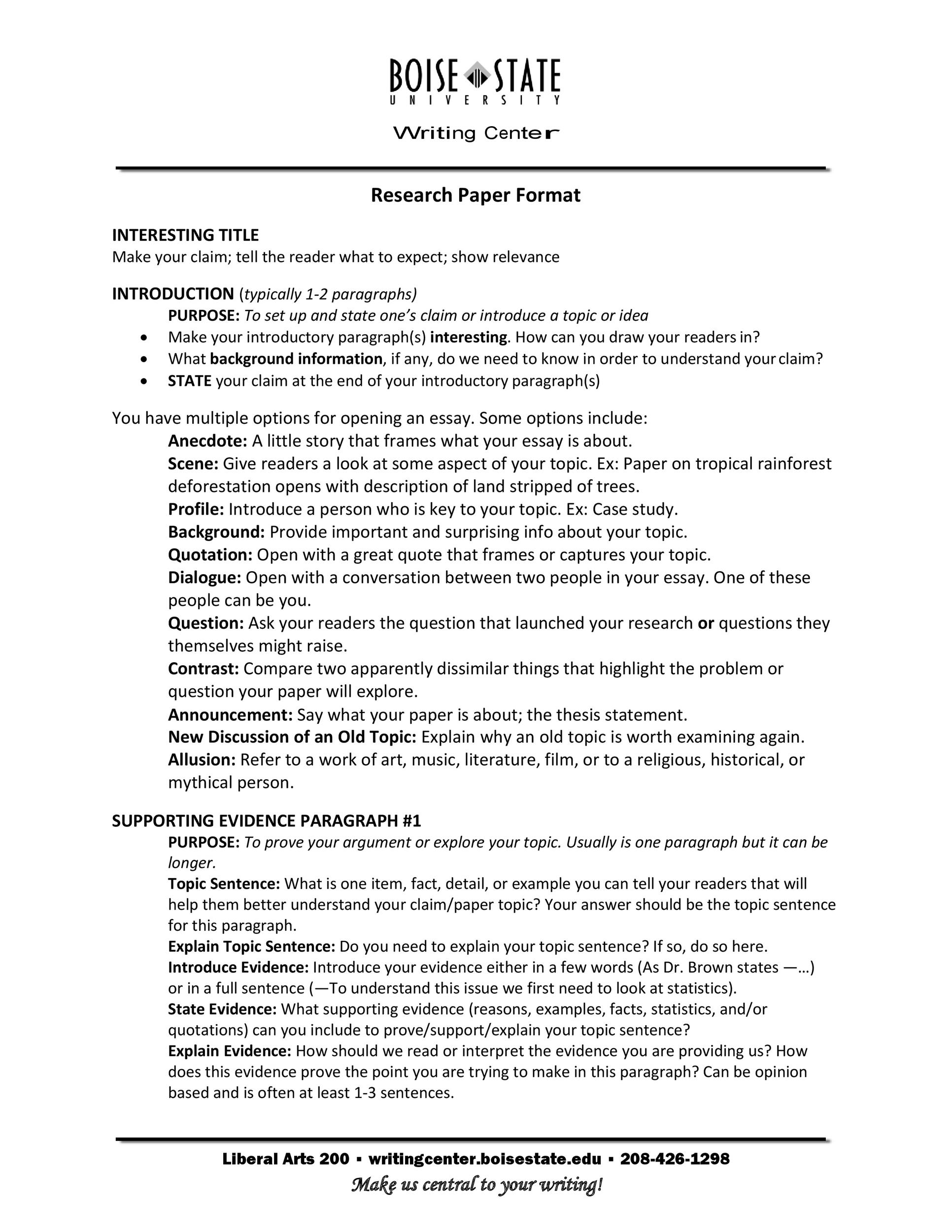
When to use the MLA format
The MLA style is typically used for works that apply to liberal arts or humanities. You may be a writer or a student who focuses on these 2 areas.
If so, you might have to write different papers using the MLA guidelines. Usually, these disciplines would require this type of format:
- Literary criticism
- Foreign language and literature
- English studies in language and literature
- Cultural studies
- Comparative literary analysis
Of course, there are other areas and disciplines of writing which use MLA guidelines. Whether you’re a student or a professional writer, you may receive a task to write a paper with an MLA essay format.
In this case, you need to follow the MLA rules we discussed earlier.
There are specific types of papers which would involve research. In this case, you’d also have to document and cite all the resources you used. Here are the types of papers where you may need to use the MLA style:
- Argumentative When you have to write an argumentative paper, you need to do research a lot. Because of this, you may have to get your information from different resources. After writing the paper, you also have to give credit to those sources to avoid any issues.
- Cause and effect This is another type of paper which you can apply the MLA format too. When making a cause and effect paper, you should stick to believable facts. So you have to do research and again, you need to document and cite them all in your paper.
- Expository When you write this type of paper, it would entail a lot of background information. In order to get all this information, you need to do research. Before wrapping up your paper, make sure you’ve included all your resources to give credit to them.
- Literary A literary paper is another type of essay you can write using the MLA style. This type of paper also requires a lot of research. While you’re researching, you need to write down all your resources. Remember, you have to give credit to those who deserve it.
- Persuasive When you make a persuasive essay using the MLA style, you’ll build your case to support one side of an argument. Also, you can present the viewpoint of the opposite side. This means that you need to present facts on both sides of the issue. To do this, you need to gather a lot of information. Again, you also need to cite your sources to follow the MLA style of writing.
More Templates
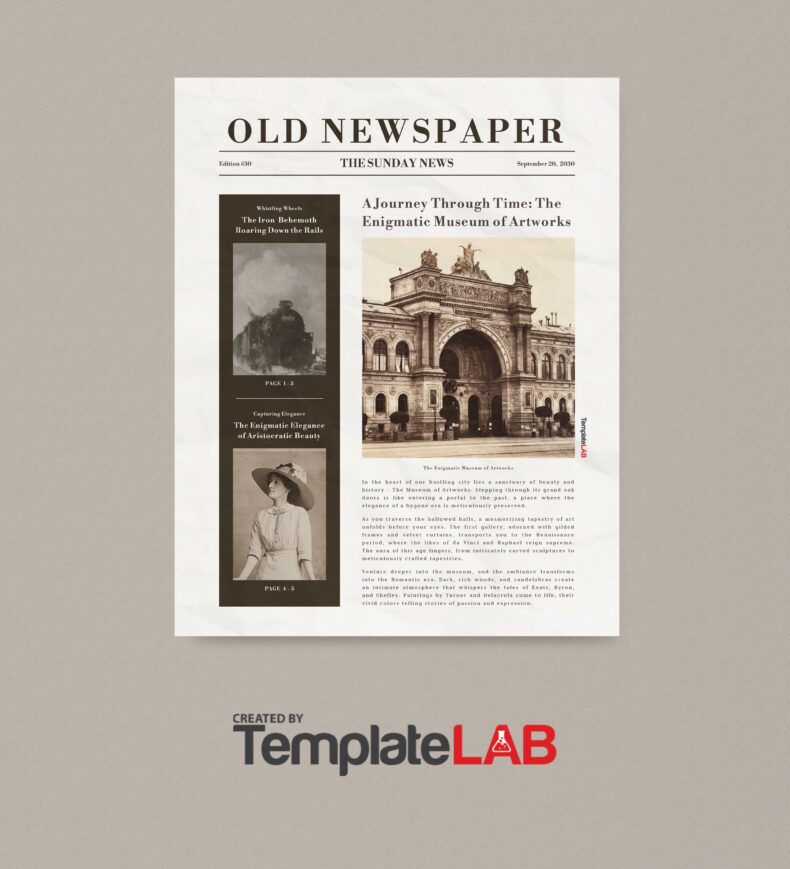
Newspaper Templates
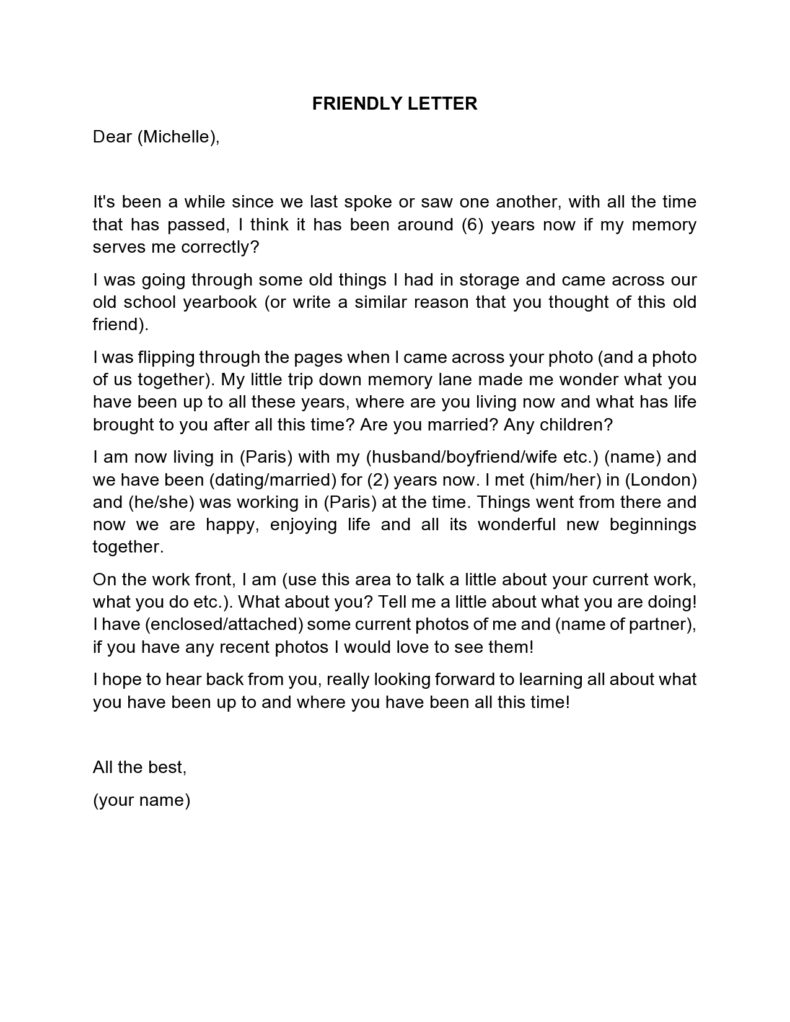
Friendly Letter Formats
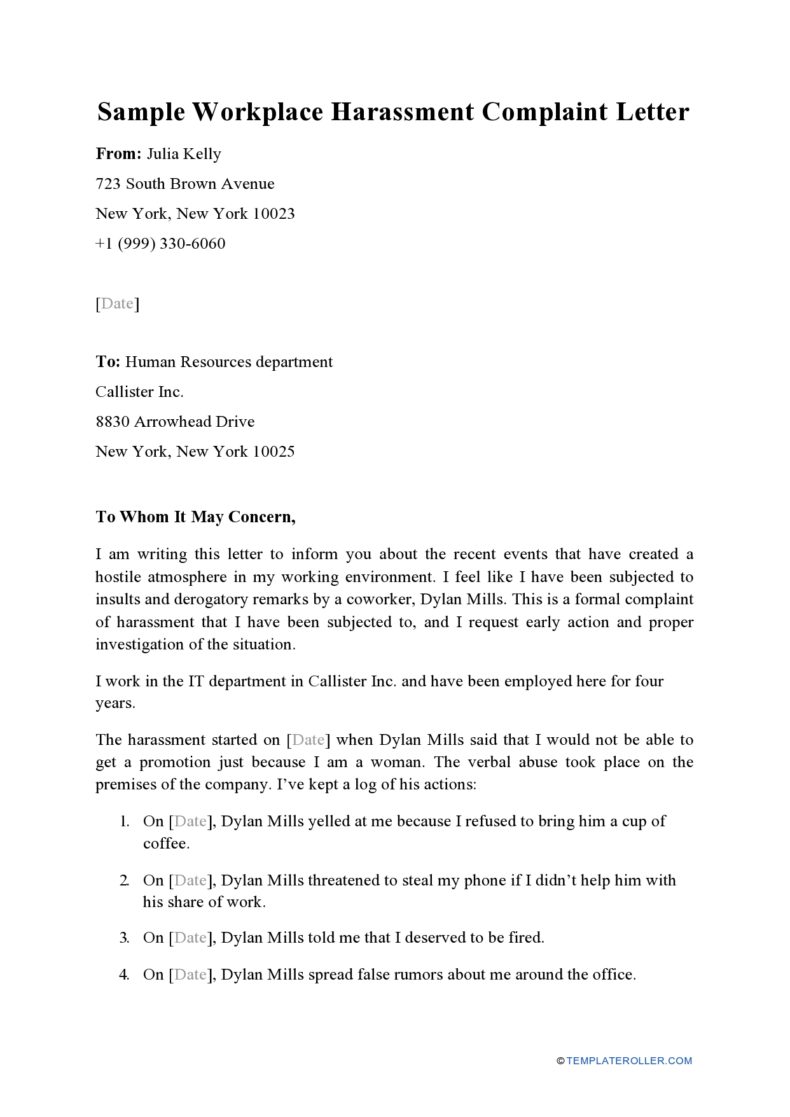
Complaint Letter Templates
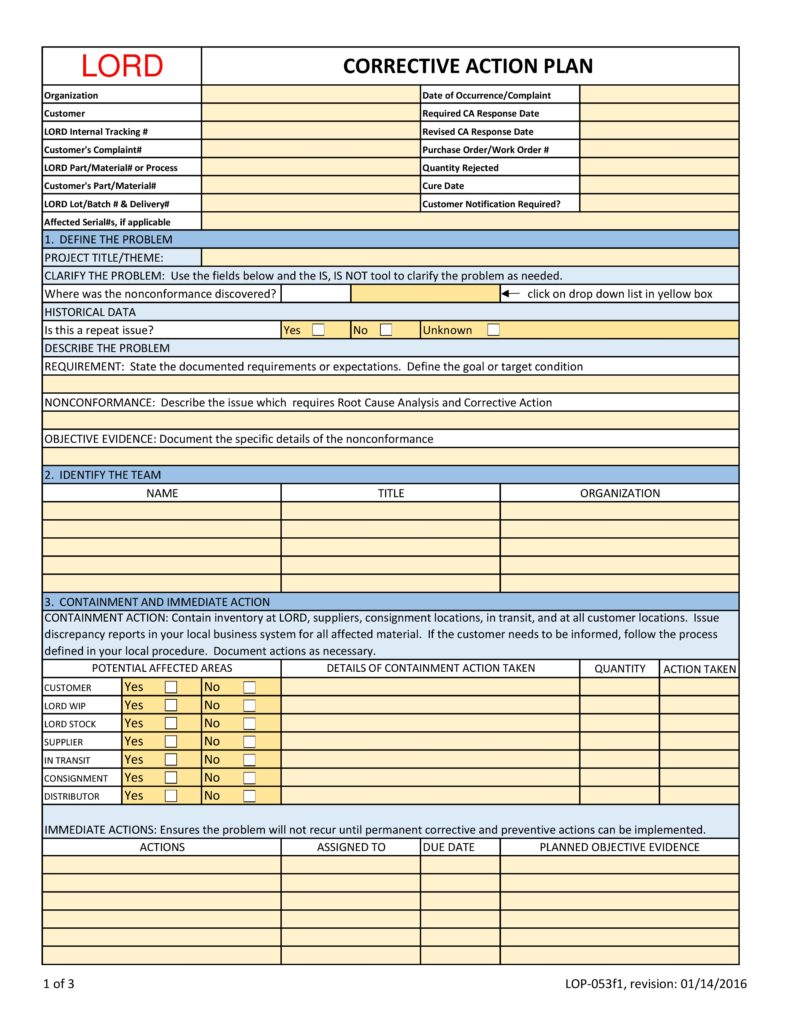
Corrective Action Plan Templates
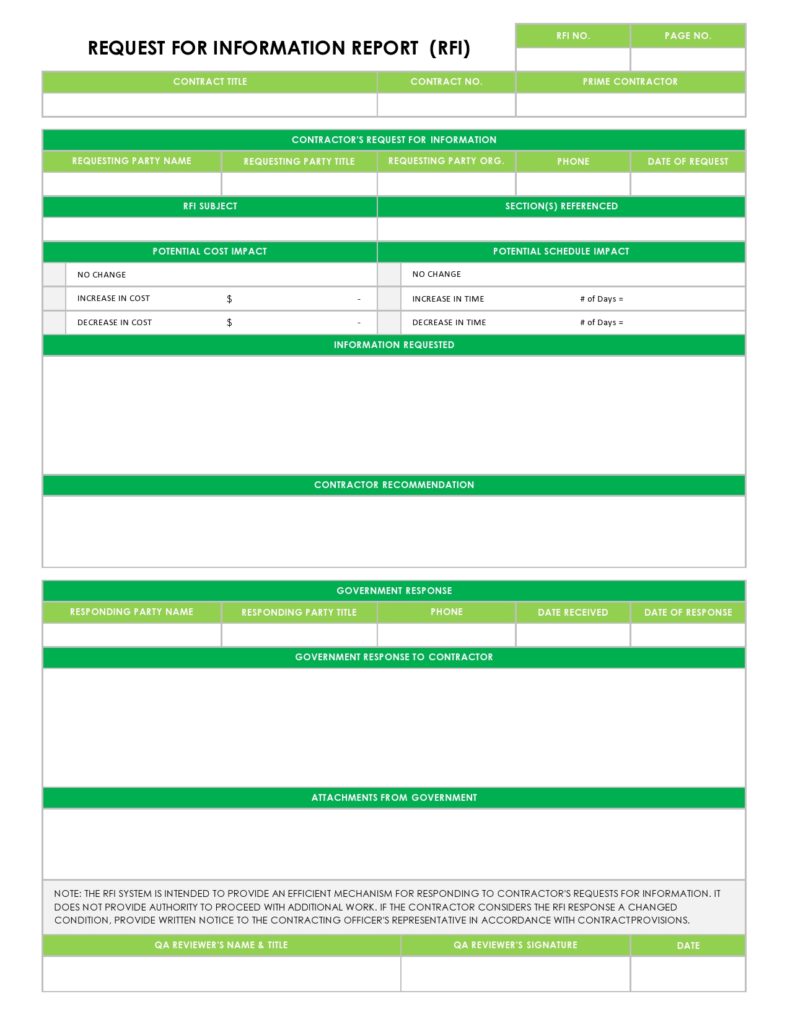
Request For Information Templates
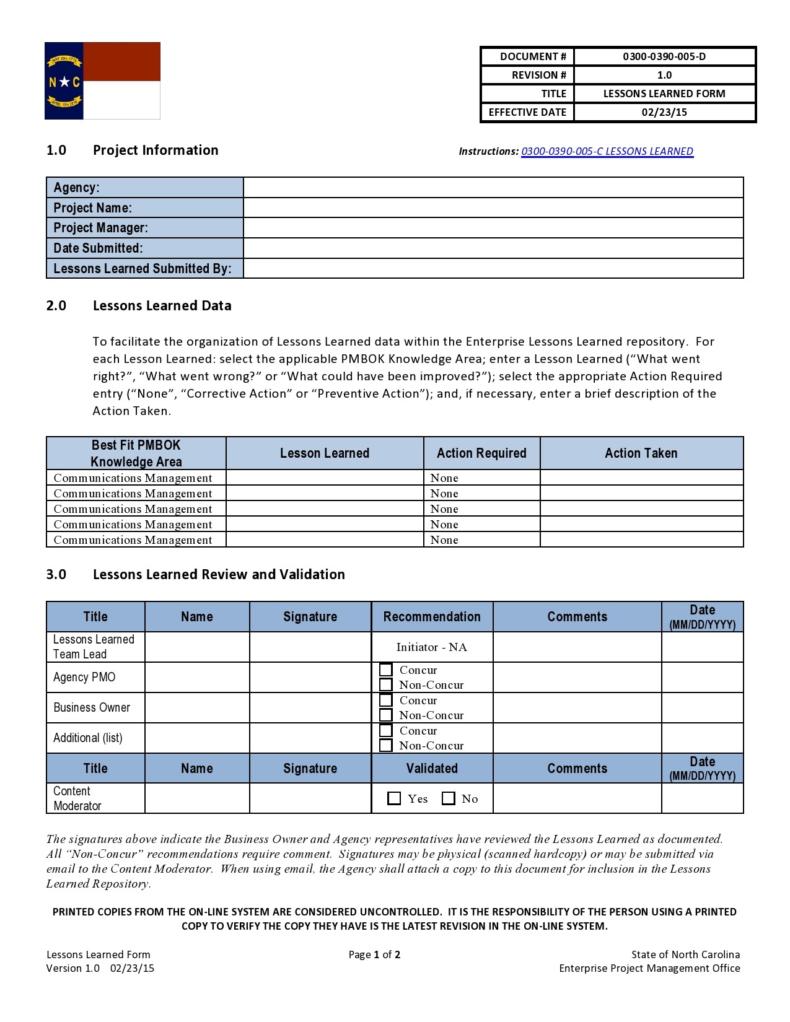
Lessons Learned Templates
Scribbr MLA Citation Generator
Accurate MLA citations, verified by experts, trusted by millions.
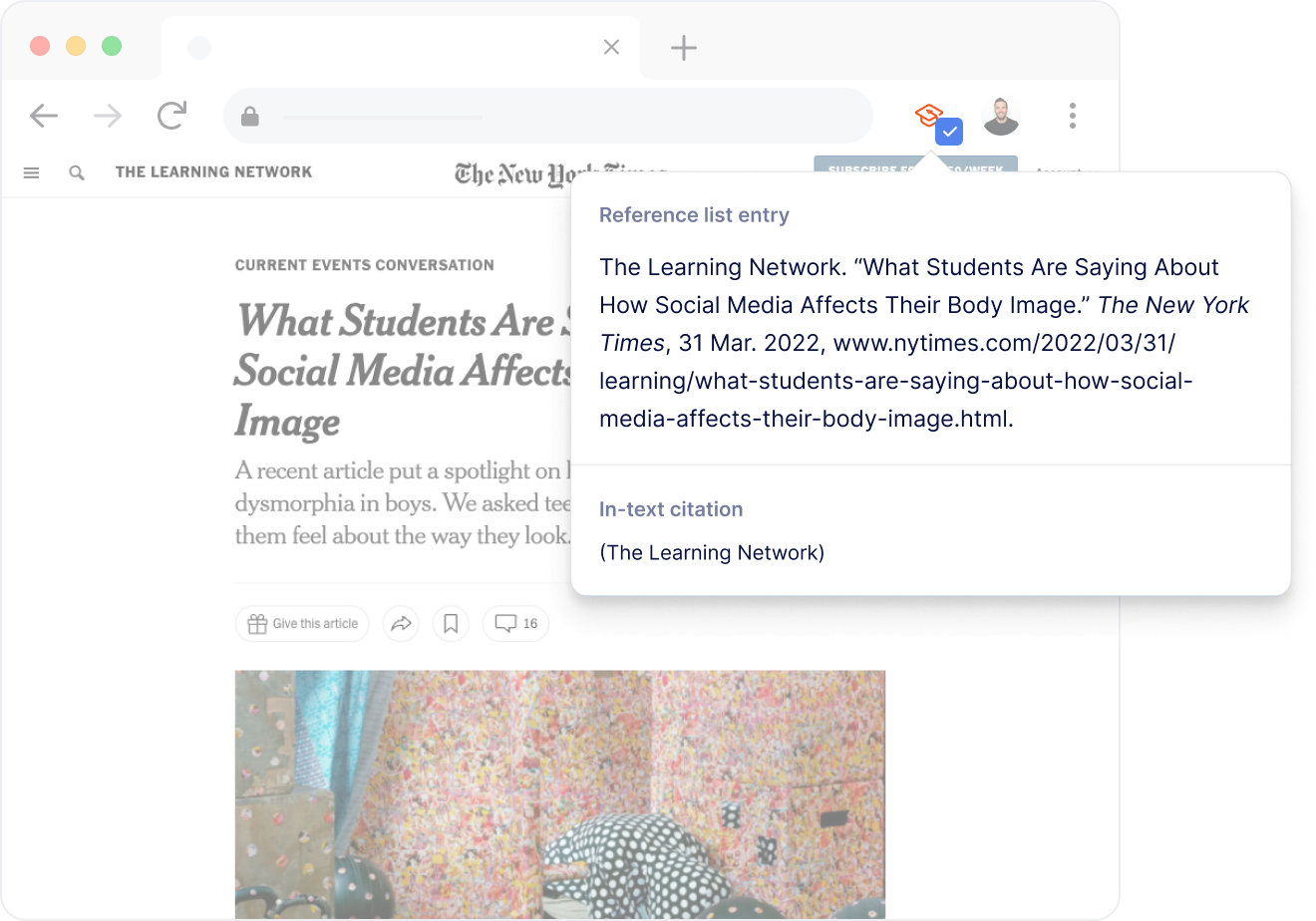
Scribbr's MLA Citation Generator for Chrome
Effortlessly cite any page or article directly from your browser with just one click. Our extension simplifies the citation process by automatically retrieving essential details such as the title, author(s), and publication date , ensuring accurate MLA citations in seconds.
| ⚙️ Styles | MLA 9 & MLA 8 |
|---|---|
| 📚 Source types | Websites, books, articles |
| 🔎 Autocite | Search by title, URL, DOI, or ISBN |

Trust in expert-verified MLA citations
Avoid the risk of losing points due to incorrect citations. Our MLA citation experts have meticulously refined our algorithms, ensuring precision and reliability. This dedication has earned us recognition and recommendations from educators worldwide.
Experience distraction-free citation
Focus on your work without interruptions. Our citation generator provides a clean interface, free from distracting video pop-ups and flashing ads. Best of all, it's completely free for everyone.
Features you'll love
Search for your source by title, URL, DOI, ISBN, and more to retrieve the relevant information automatically.
MLA 8th & 9th edition
Scribbr's Citation Generator supports both MLA 8 and MLA 9 (as well as APA and Harvard ). No matter what edition you're using, we’ve got you covered!
Export to Bib(La)TeX
Easily export in BibTeX format and continue working in your favorite LaTeX editor.
Export to Word
Reference list finished? Export to Word with perfect indentation and spacing set up for you.
Sorting, grouping, and filtering
Organize the reference list the way you want: from A to Z, new to old, or grouped by source type.
Save multiple lists
Stay organized by creating a separate reference list for each of your assignments.
Choose between Times New Roman, Arial, Calibri, and more options to match your style.
Industry-standard technology
Scribbr's citation generator is built using the same citation software (CSL) as Mendeley and Zotero, but with an added layer for improved accuracy.
Annotations
Create perfectly formatted MLA Style annotated bibliographies with just a few clicks.
Explanatory tips help you get the details right to ensure accurate citations.
Citation guides
Getting to grips with citation is simple with the help of our highly rated MLA citation guides and videos .
Secure backup
Your work is saved automatically after every change and stored securely in your Scribbr account.
- Introduction
- Missing information
- No page numbers
- Scroll to top
How to cite in MLA format
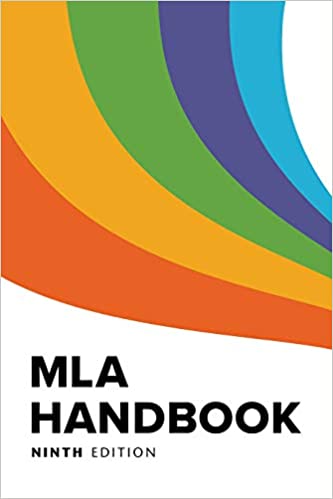
MLA is one of the most common citation styles used by students and academics. This quick guide explains how to cite sources according to the 9th edition (the most recent) of the MLA Handbook . You can also use Scribbr’s free citation generator to automatically generate references and in-text citations.
An MLA citation has two components:
- In-text citation : Every time you quote or paraphrase a source, you cite the author and the page number in parentheses.
- Works Cited : At the end of your paper, you give a full reference for every source you cited, alphabetized by the author’s last name.
MLA Works Cited list
The list of Works Cited (also known as the bibliography or reference page) gives full details of every source you cited in your text. Each entry is built from nine core elements:
Following this format, you can create a citation for any type of source—for example, a book , journal article , website , or movie . You only include information that’s relevant to the type of source you’re citing.
Missing information in MLA citations
Regardless of the source type, the most important elements of any MLA citation are the author , the source title , and the publication date. If any of these are missing from the source, the Works Cited entry will look slightly different.
| What’s missing? | What to do | Works Cited example |
|---|---|---|
| No author | Start with the source title instead. Alphabetize by the first word (ignoring ). | “Australia fires: ‘Catastrophic’ alerts in South Australia and Victoria.” , 20 Nov. 2019, www.bbc.com/news/world-australia-50483410. |
| No title | Give a brief description of the source. Use sentence case and no italics or quotation marks. | Mackintosh, Charles Rennie. Chair of stained oak. 1897–1900, Victoria and Albert Museum, London. |
| No date | Leave out the publication date. Add the date you accessed the source at the end of the citation. | “Who are Scribbr Editors?” , www.scribbr.com/about-us/editors/. Accessed 10 June 2019. |
MLA Citation Generator
Generate accurate MLA citations in seconds
Get started
MLA in-text citations
MLA in-text citations are brief references that direct your reader to the full source entry. You include them every time you quote , block quote , paraphrase or summarize a source.
The in-text citation must match the first word of the Works Cited entry—usually the author’s last name . It also includes a page number or range to help the reader locate the relevant passage.
| Author | What to do | Citation example |
|---|---|---|
| 1 author | Give the author’s last name. | (Wallace 11–12) |
| 2 authors | Give both author’s last names. | (Wallace and Armstrong 11–12) |
| 3+ authors | Name the first author followed by “et al.” | (Wallace et al. 11–12) |
| Corporate author | If a source was created by an organization other than the publisher, use the organization name as author. | (U.S. Global Change Research Program 22) |
| No author | If the author is the same as the publisher, or if no author is credited, use the source title instead. Format the title the same as in the full Works Cited reference, and shorten if it is more than four words. | (“Australia Fires”) |
| Multiple sources by the same author | Include the title (or a shortened version) after the author’s name in each source citation. | (Morrison, , 73) (Morrison, , 45) |
If you already named the author in your sentence, include only the page number in parentheses:
Sources with no page numbers
If the source has no page numbers, you either use an alternative locator, or leave the page number out of the citation:
| Source type | What to do | Citation example |
|---|---|---|
| Audiovisual source (e.g. a or ) | Give the time range of the relevant section. | (Arnold 03:15–03:21). |
| Source with numbered sections (e.g. an ) | Give a paragraph, section, or chapter number. | (Smith, par. 38) (Rowling, ch. 6) |
| Source with no numbered sections (e.g. a ) | Leave out the page number. | (Barker) |
Tools and resources
Besides the MLA Citation Generator, Scribbr provides many more helpful tools and resources;
- Citation generator : Generate flawless APA , MLA , and Harvard citations in seconds
- Free plagiarism checker : Detect and correct plagiarism with the most accurate plagiarism checker for students
- AI Proofreader : Upload and improve unlimited documents and earn higher grades on your assignments. Try it for free!
- Paraphrasing tool: Avoid accidental plagiarism and make your text sound better.
- Grammar checker : Eliminate pesky spelling and grammar mistakes.
- Summarizer: Read more in less time. Distill lengthy and complex texts down to their key points.
- AI detector: Find out if your text was written with ChatGPT or any other AI writing tool. ChatGPT 2 & ChatGPT 3 supported.
- Proofreading services : Hire a professional editor to improve your writing
- Citation checker : Check your work for citation errors and missing citations.
- Guides and videos : Explore hundreds of articles, bite-sized videos, time-saving templates, and handy checklists that guide you through the process of research, writing, and citation.
Purdue Online Writing Lab Purdue OWL® College of Liberal Arts
MLA Sample Works Cited Page

Welcome to the Purdue OWL
This page is brought to you by the OWL at Purdue University. When printing this page, you must include the entire legal notice.
Copyright ©1995-2018 by The Writing Lab & The OWL at Purdue and Purdue University. All rights reserved. This material may not be published, reproduced, broadcast, rewritten, or redistributed without permission. Use of this site constitutes acceptance of our terms and conditions of fair use.
Note: We have chosen to include the date of access for the online sources below. The latest MLA guidelines specify that this is optional, but strongly recommended for sources whose date of publication is unavailable.
Note also: The citation for An Inconvenient Truth below assumes the film has been cited by its title in the text. If it had been cited by the name of its director, the citation would need to begin with Guggenheim's surname. MLA guidelines specify that both styles are acceptable (see, e.g., this "Ask the MLA" page ).
Works Cited
Dean, Cornelia. "Executive on a Mission: Saving the Planet." The New York Times , 22 May 2007, www.nytimes.com/2007/05/22/science/earth/22ander.html?_r=0. Accessed 29 May 2019.
Ebert, Roger. Review of An Inconvenient Truth , directed by Davis Guggenheim. Ebert Digital LLC , 1 June 2006, www.rogerebert.com/reviews/an-inconvenient-truth-2006. Accessed 15 June 2019.
Gowdy, John. "Avoiding Self-Organized Extinction: Toward a Co-Evolutionary Economics of Sustainability." International Journal of Sustainable Development and World Ecology, vol. 14, no. 1, 2007, pp. 27-36.
Harris, Rob, and Andrew C. Revkin. “Clinton on Climate Change.” The New York Times , 17 May 2007, www.nytimes.com/video/world/americas/1194817109438/clinton-on-climate-change.html. Accessed 29 July 2016.
An Inconvenient Truth . Directed by Davis Guggenheim, Paramount, 2006.
Leroux, Marcel. Global Warming: Myth or Reality?: The Erring Ways of Climatology . Springer, 2005.
Milken, Michael, et al. "On Global Warming and Financial Imbalances." New Perspectives Quarterly , vol. 23, no. 4, 2006, p. 63.
Nordhaus, William D. "After Kyoto: Alternative Mechanisms to Control Global Warming." American Economic Review , vol. 96, no. 2, 2006, pp. 31-34.
---. "Global Warming Economics." Science, vol. 294, no. 5545, 9 Nov. 2001, pp. 1283-84, DOI: 10.1126/science.1065007.
Regas, Diane. “Three Key Energy Policies That Can Help Us Turn the Corner on Climate.” Environmental Defense Fund , 1 June 2016, www.edf.org/blog/2016/06/01/3-key-energy-policies-can-help-us-turn-corner-climate. Accessed 19 July 2016.
Revkin, Andrew C. “Clinton on Climate Change.” The New York Times , 17 May 2007, www.nytimes.com/video/world/americas/1194817109438/clinton-on-climate-change.html. Accessed 29 July 2016.
Shulte, Bret. "Putting a Price on Pollution." US News & World Report , vol. 142, no. 17, 14 May 2007, p. 37. Ebsco, Access no: 24984616.
Uzawa, Hirofumi. Economic Theory and Global Warming . Cambridge UP, 2003.

IMAGES
COMMENTS
The following essays were selected for the 2023 edition of Writing with MLA Style. The 2023 selection committee was composed of Ellen C. Carillo, University of Connecticut (chair); Rachel Ihara, Kingsborough Community College, City University of New York; and Tarshia L. Stanley, Wagner College. PDF. Caroline Anderson (Pepperdine University)
Cite your MLA source. Start by applying these MLA format guidelines to your document: Use an easily readable font like 12 pt Times New Roman. Set 1 inch page margins. Use double line spacing. Include a ½" indent for new paragraphs. Include a four-line MLA heading on the first page. Center the paper's title.
This material may not be published, reproduced, broadcast, rewritten, or redistributed without permission. Use of this site constitutes acceptance of our terms and conditions of fair use. This resource contains a sample MLA paper that adheres to the 2016 updates. To download the MLA sample paper, click this link.
MLA (Modern Language Association) style is most commonly used to write papers and cite sources within the liberal arts and humanities. This resource, updated to reflect the MLA Handbook (9th ed.), offers examples for the general format of MLA research papers, in-text citations, endnotes/footnotes, and the Works Cited page.
Type your paper on a computer and print it out on standard, white 8.5 x 11-inch paper. Double-space the text of your paper and use a legible font (e.g. Times New Roman). Whatever font you choose, MLA recommends that the regular and italics type styles contrast enough that they are each distinct from one another.
Here's how you can set your first page up for MLA 9th edition. On the first line, write your full name (flush left) On a new line, write your professor or instructor's full name. On a new line, write the course code and course name. On a new line, write the full date spelt out (e.g., 15 June 2023)
MLA Style Center, the only authorized Web site on MLA style, provides free resources on research, writing, and documentation. ... About MLA Handbook Plus; Formatting Your Research Project; Interactive Practice Template; ... Sample Essays: Writing with MLA Style; Using MLA Format; Works Cited: A Quick Guide; Teaching Resources. A Century of ...
page). Instead, the first page of the paper should begin with four double-spaced lines flush to the left margin that indicate: your name, the name(s) of the course instructor(s), the name and number of the course, and the date (in this order). The title of the paper should be on a separate line, centered and in Title Case (see sample below).
Guidelines on setting up research papers in MLA format with updated advice on headings, lists, and title pages for group projects; Revised, comprehensive, step-by-step instructions for creating a list of works cited in MLA format that are easier to learn and use than ever before; A new appendix with hundreds of example works-cited-list entries ...
How to Format Your Essay in MLA Style. Now, let's go through step-by-step instructions to help you correctly format your essay. 1. Margins and Page Layout. Go to the Page Layout settings in your word processor and set one-inch margins on all sides of the paper. Set the text to be left-aligned.
This is a step-by-step tutorial on how to format the front page in MLA Style as of Jan 31, 2023, using the most recent version of MS Word. If you are using M...
MLA Sample Paper #1. If you've been wondering how to produce a research paper that is strong in both formatting and writing, you've come to the right place. Check out our first sample paper below. It is a helpful and clearly labeled visual aid to refer to. Note that while these sample papers do not include MLA abstracts, you should check ...
MLA Style (9th Edition) Template. Sample Papers. You are going to love this! Save this template somewhere safe or e-mail it to yourself. Then resave it immediately with the name of your new document. This will keep your template safe and ready to reuse again for future assignments. This template will be sufficient for most student MLA papers.
Reintroduction of MLA guidance on research papers, absent in MLA 8, with expanded instructions. A new chapter on inclusive language. Expanded guidelines on grammar mechanics. Research Projects. After a brief, 1-edition reprieve, MLA 9 has reintroduced their guidelines for formatting a research paper.
MLA 2023 njl - 071723 . MLA Stylesheet - Alfred C. O'Connell Library - This handout covers MLA style basics, samples, formatting, and citation examples for sources used in-text throughout your paper and in the Works Cited list at the end of your paper. Always consult your professor to learn if they have any special requirements for citations.
Provided by 6 MLA Format The Academic Center for Excellence Updated July 2023 . In cases where you have used video or audio media sources in the paper, the in-text citation should include the author's name (if available), or a shortened version of the title, and the time
MLA Essay Template. For even experienced students, formatting a paper can be a daunting task. For that reason, the Excelsior Online Writing Lab created this template to give writers a foundation for formatting using the Modern Language Association guidelines. The template also references OWL sections that might be helpful when writing an essay.
To create an MLA format title page, list the following on separate lines, left-aligned at the top of the page: Then leave a few blank lines and list the title of the paper, centered and in title case, halfway down the page. All text should be double-spaced and in the same font as the rest of the paper. Note: If you're using a title page ...
Generate MLA format citations and create your works cited page accurately with our free MLA citation generator. Now fully compatible with MLA 8th and 9th Edition. ... and URLs as in input, and output fully formatted citations that can be inserted into the Works Cited page of an MLA-compliant academic paper. ... copyright 2018-2023 MyBib ...
The best resources to use when you need to write an MLA format paper are: The MLA Handbook This handbook is now in its 8th edition. ... 06 Nov 2023 Newspaper Templates Read More. 08 Feb 2023 Friendly Letter Formats Read More. 03 Jan 2022 Complaint Letter Templates Read More. 17 Nov 2021
How to cite in MLA format. MLA is one of the most common citation styles used by students and academics. This quick guide explains how to cite sources according to the 9th edition (the most recent) of the MLA Handbook.You can also use Scribbr's free citation generator to automatically generate references and in-text citations.. An MLA citation has two components:
General guidelines for referring to the works of others in your essay Works Cited Page. Resources on writing an MLA style works cited page, including citation formats. Basic Format Basic guidelines for formatting the works cited page at the end of an MLA style paper Books
MLA (Modern Language Association) style is most commonly used to write papers and cite sources within the liberal arts and humanities. This resource, updated to reflect the MLA Handbook (9th ed.), offers examples for the general format of MLA research papers, in-text citations, endnotes/footnotes, and the Works Cited page.